News
The future’s restoration: Fox Chapel in Pittsburgh

The Fox Chapel Golf Club in Pittsburgh is known for its Seth Raynor golf course. With Raynor’s guiding hand, the layout crafted onto this meadow in the eponymous section of the Burgh stands unique among the region’s golf courses. While nearby Oakmont can lay claim to being the only Henry Fownes golf course design, Fox Chapel can stake its own claim as Raynor’s best. That is heady company, given the likes of Camargo in Cincinnati, Blue Mound in Wisconsin, and Fishers Island in the waters between New York and Connecticut.
Over the course of the year 2020, Tom Marzolf of Fazio Design lived and worked these fairways, helping course superintendent Jason Hurwitz and a build team rediscover and recreate what Raynor laid down. By rediscover, the assemblage confirmed original putting surface sizes, fairway corridors, and bunker placements. Some of the latter had been lost, and many of the former had shrunk just a bit. By recreate, the bevy dreamed how Raynor and Banks would have placed bunkers and tees in an era of increased technological influence. What they turned out to the membership in the spring of 2021, was a restored and renewed Fox Chapel, one that brags of Raynor’s brilliance and sets the stage for the next 50 years.
Seth Raynor built the course in the early 1920s. Unlike other courses, we had evidence of what it looked like immediately after it was built, including great photos from 1925 when it opened, as well as aerial photos from the ‘30s and more. We could see changes that happened over time.
“[A.W.] Tillinghast was on property in the ‘30s, as part of the work he did for the PGA of America during The Depression, and evidently there was an attempt to remove some of Raynor’s design. You can see in aerials taken in 1938 Raynor features being eliminated and “Winged Foot-type” fingers going into Raynor’s hard-edged bunkers. Other geometric forms were rounded out, even mowing lines changed. For example, on the par-4, dogleg-right 13th hole, Tilly sharpened the dogleg and moved the green to the right, eliminating a classic Raynor double-plateau surface. The 16th hole was a “Bottle”; then the Bottle design was gone and Winged Foot-type bunkers were added.”
“Were some of the bolder features too hard to play? We don’t know, but we felt our job was to make members aware of the changes.” – Tom Marzolf, Fazio Design
Seth Raynor was the right-hand man of Charles Blair Macdonald, the blustery father of American golf. Raynor was contracted to build a nine-hole course at the Hotchkiss School in Connecticut, and it was there that he met one of the school’s employees, Charles Banks. Banks had served as both English instructor and development officer at the prep school and became enthralled with Raynor’s approach to design. After the school’s course opened in 1924, Banks abandoned his career at Hotchkiss and joined forces with Raynor. Banks would earn the nickname “Steam Shovel,” for purportedly losing a steam shovel in a bog at the Whippoorwill course in New York. When Raynor passed in 1926, two years after their meeting, Banks finished a number of Raynor’s courses.
For those not in the know, Macdonald and Raynor were purveyors of the “template” school of golf course architecture. During travels to Scotland and England, Macdonald had identified holes that he considered to be the finest examples of strategic golf course architecture. They bore names like Redan, Road, Biarritz, Punch Bowl, Hog’s Back, Eden, Maiden, and others. Many of these holes are found, in one form or fashion, at Fox Chapel. In fact, it is something of a scavenger hunt among template fans to determine which course or club has the finest, the most unique, the most authentic mimeo of the original. Macdonald’s magnum opus, the National Golf Links of America, sits in the Hamptons of Long Island, and is a treasure trove of templates.
In addition to the aforementioned, it should be noted that Raynor was a civil engineer, a man remarkably inclined toward geometry. As Mr. Marzolf notes, the following is a fine assessment of what the restoration committee set out to achieve
“Geometry, bisecting lines of play, straight mowing lines, bands of the fairway that go right up to a geometrically shaped bunker and then turn. The use of template holes, like his mentor C.B. Macdonald, repeating the size of bunkers. We’re trying to make this the strictest adhering to Raynor principles possible. It is not an interpretation, it’s truly putting Raynor back on the ground.”
Over the intervening decades, the Fox Chapel Club hosted a number of elite events but fell a bit of a victim to the architectural flavors of the different times. Trees grew up and green surfaces shrunk. Deep rough became a method of protecting par, rather than the firm and fast conditions championed by Raynor and other, golden-age architects. In 2014, the club retained the Fazio design firm to develop a master plan for the golf course. Tom Marzolf was charged with leading a return to Raynor principles. Over the next seven years, the club and the Fazio firm moved in the direction of restoring as much of Seth Raynor’s design to the grounds but kept an eye on the future.
Many bunkers were simply no longer in play, thanks to the gains of technology over the years. Some bunkers were moved farther down the fairway, keeping the Raynor essence but allowing the holes to challenge the top players of today and tomorrow. Greens were restored to their original sizes, and lost features were recaptured. The greatest (but not the last) reclamation took place on the 16th hole. In 2005, when this writer visited the club for a high school tournament, the antipenultimate hole was known as Raynor’s Prize Dogleg, although there was little leg to the dog. Marzolf and the club determined that this was Raynor’s Bottle hole, and worked diligently to restore that trace to the hole.
With new equipment, we needed to modernize the course, to address the effects of new clubs and balls. We had to have a course that fits the yardage that the best players hit the ball. So, we took Raynor’s concepts and moved them.
“For example, originally bunkers were 185 to 225 yards off the tee: In many cases, we eliminated those bunkers and added new ones in the 285- to 325-yard range from the back tees and on the same side of the fairway. Deleting old bunkers also meant smoothing the grades where they used to be, eliminating any evidence, and reworking all the fairway lines. Building new bunkers meant locating and staking them out, projecting them into the fairways, and making them the focal points that control club selection off the tee.” – Tom Marzolf
One might have expected that 2019-2020 would have been lost to the pandemic, but that was not the case. Mr. Marzolf moved to Pittsburgh to supervise the final steps in the restoration of Raynor’s western Pennsylvania gem. Under the guidance of superintendent Jason Hurwitz, the reclamation was complete. In June of 2021, the Fox Chapel Golf Club revealed its wonderful golf course to the public.
What about our “but not the last” notation, two paragraphs above? It turns out that the 13th hole, which extends to the southernmost point of the property, was once the site of a remarkable, double plateau green. It remains the sole feature to not be returned to the fabled layout. It’s on the minds of more than one member and fan, and it would be a spectacular addition to an already challenging hole. We can dream, can’t we?
FOOTNOTE: It is suggested by membership that Banks did work with Raynor at Fox Chapel. Two bunkers in particular bear his style: the bunker that guards the front right portion of the 15th green and another on the eighth hole. The relationship of the bunker floors to the green heights intimate the work of a man who would impart his own technique to the digging of sand pits. It’s impossible to move from speculation to fact, so we’ll leave it at that. Banks would continue Raynor’s work after his passing, but would ultimately succumb to ill health himself, dying at age 49 in 1931.
—————————
For more on Seth Raynor, read this piece by Raynor Society executive director Anthony Pioppi.
For more on Charles Henry Banks, read this excellent piece by Anthony Pioppi.
Photos courtesy of this writer.
- LIKE28
- LEGIT3
- WOW1
- LOL1
- IDHT0
- FLOP0
- OB0
- SHANK1
Equipment
Did Rory McIlroy inspire Shane Lowry’s putter switch?
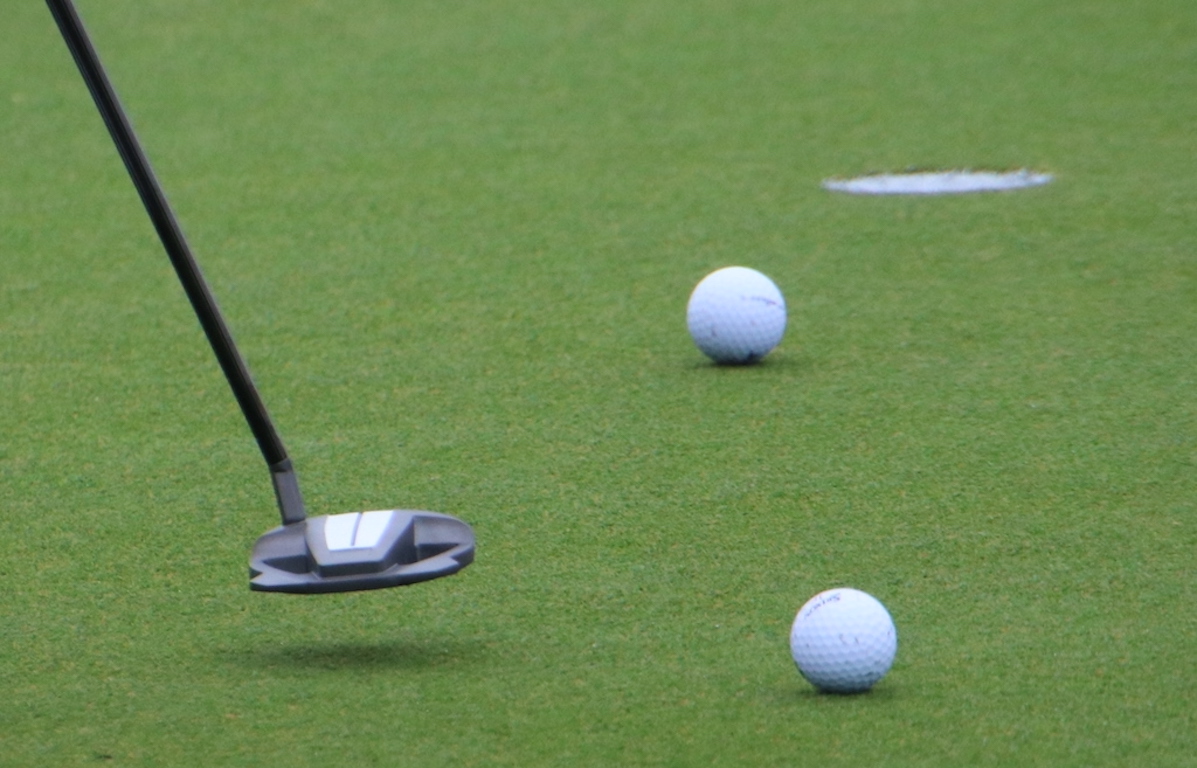
Editor’s note: This is an excerpt from a piece our Andrew Tursky originally wrote for PGATour.com’s Equipment Report. Head over there for the full article.
The timing of Lowry’s putter changeup was curious: Was he just using a Spider putter because he was paired with McIlroy, who’s been using a Spider Tour X head throughout 2024? Was Lowry just being festive because it’s the Zurich Classic, and he wanted to match his teammate? Did McIlroy let Lowry try his putter, and he liked it so much he actually switched into it?
Well, as it turns out, McIlroy’s only influence was inspiring Lowry to make more putts.
When asked if McIlroy had an influence on the putter switch, Lowry had this to say: “No, it’s actually a different putter than what he uses. Maybe there was more pressure there because I needed to hole some more putts if we wanted to win,” he said with a laugh.
To Lowry’s point, McIlroy plays the Tour X model, whereas Lowry switched into the Tour Z model, which has a sleeker shape in comparison, and the two sole weights of the club are more towards the face.
Lowry’s Spider Tour Z has a white True Path Alignment channel on the crown of his putter, which is reminiscent of Lowry’s former 2-ball designs, thus helping to provide a comfort factor despite the departure from his norm. Instead of a double-bend hosel, which Lowry used in his 2-ball putters, his new Spider Tour Z is designed with a short slant neck.
“I’ve been struggling on the greens, and I just needed something with a fresh look,” Lowry told GolfWRX.com on Wednesday at the 2024 Wells Fargo Championship. “It has a different neck on it, as well, so it moves a bit differently, but it’s similar. It has a white line on the back of it [like my 2-ball], and it’s a mallet style. So it’s not too drastic of a change.
“I just picked it up on the putting green and I liked the look of it, so I was like, ‘Let’s give it a go.’”
Read the rest of the piece over at PGATour.com.
- LIKE1
- LEGIT0
- WOW0
- LOL0
- IDHT0
- FLOP0
- OB0
- SHANK0
Equipment
Spotted: Tommy Fleetwood’s TaylorMade Spider Tour X Prototype putter

Tommy Fleetwood has been attached to his Odyssey White Hot Pro #3 putter for years now. However, this week at the Wells Fargo Championship, we did spot him testing a new putter that is very different, yet somewhat similar, to his current gamer.
This new putter is a TaylorMade Spider Tour X head but with a brand new neck we haven’t seen on a Spider before. A flow neck is attached to the Spider head and gives the putter about a 1/2 shaft offset. This style neck will usually increase the toe hang of the putter and we can guess it gets the putter close to his White Hot Pro #3.
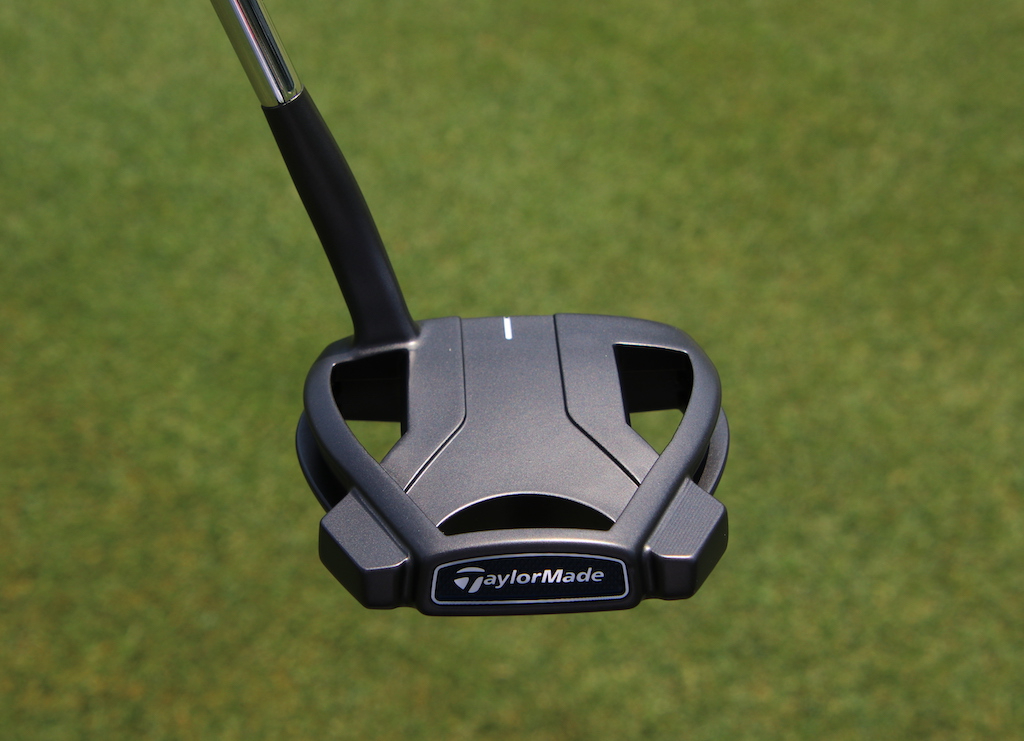
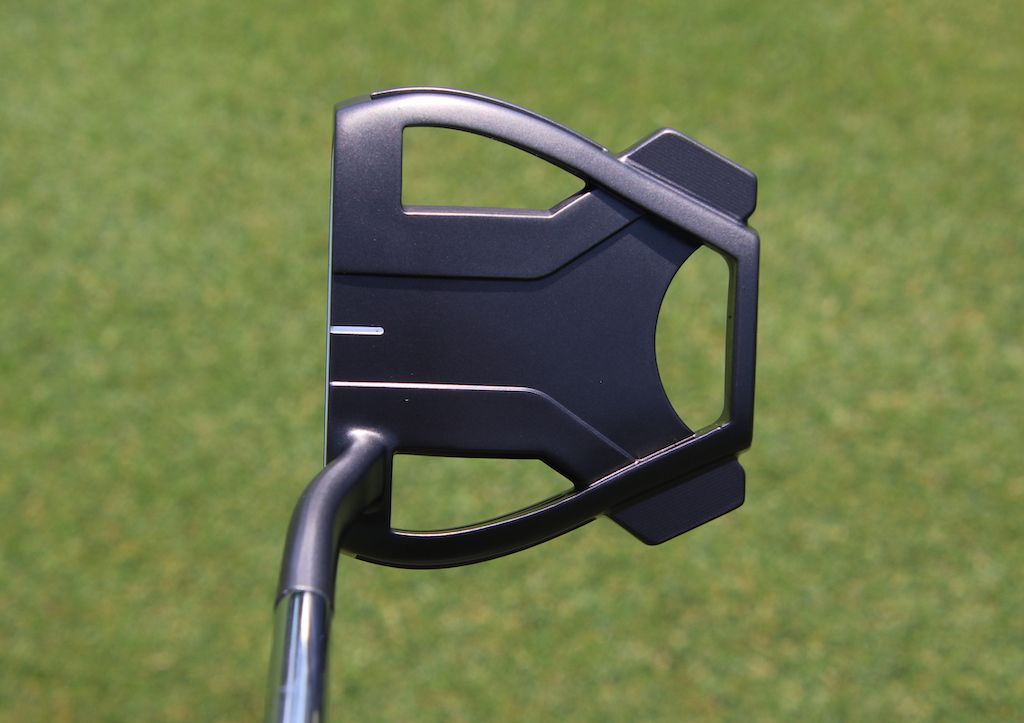
Another interesting design is that lack of TaylorMade’s True Path alignment on the top of the putter. Instead of the large white center stripe, Tommy’s Spider just has a very short white site line milled into it. As with his Odyssey, Tommy seems to be a fan of soft inserts and this Spider prototype looks to have the TPU Pure Roll insert with 45° grooves for immediate topspin and less hopping and skidding.
The sole is interesting as well in that the rear weights don’t look to be interchangeable and are recessed deep into the ports. This setup could be used to push the CG forward in the putter for a more blade-like feel during the stroke, like TaylorMade did with the Spider X Proto Scottie Scheffler tested out.
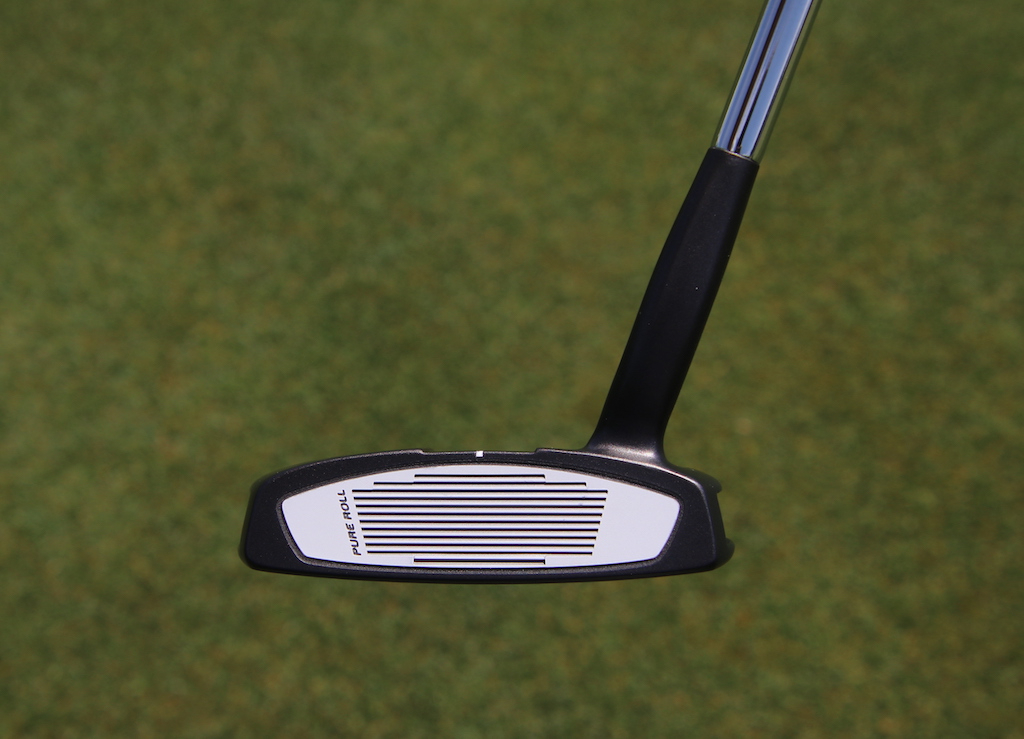

Tommy’s putter is finished off with an older Super Stroke Mid Slim 2.0 grip in blue and white. The Mid Slim was designed to fit in between the Ultra Slim 1.0 and the Slim 3.0 that was a popular grip on tour.
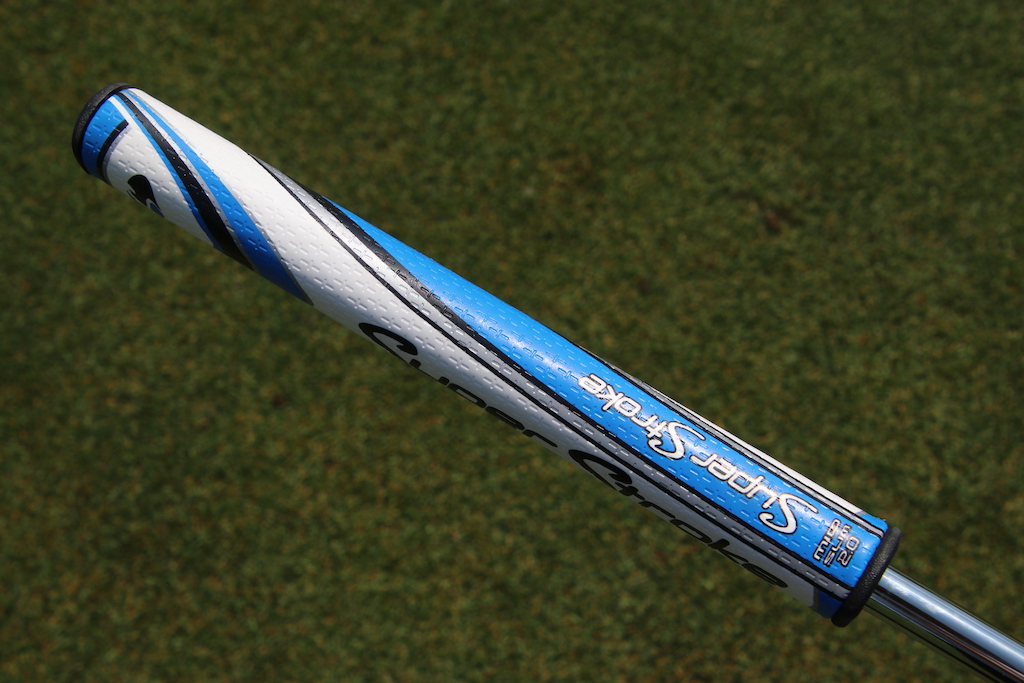
- Check out the rest of our photos from the 2024 Wells Fargo Championship
- LIKE23
- LEGIT2
- WOW2
- LOL1
- IDHT1
- FLOP0
- OB0
- SHANK0
Equipment
Rickie Fowler’s new putter: Standard-length Odyssey Jailbird 380 in custom orange

Editor’s note: This is an excerpt from a piece our Andrew Tursky originally wrote for PGATour.com’s Equipment Report. Head over there for the full article.
…The Jailbird craze hasn’t really slowed down in 2024, either. According to Odyssey rep Joe Toulon, there are about 18-20 Jailbird putter users on the PGA TOUR.
Most recently, Akshay Bhatia won the 2024 Valero Texas Open using a broomstick-style Odyssey Jailbird 380 putter and Webb Simpson is switching into a replica of that putter at the 2024 Wells Fargo Championship.
Now, Fowler, who essentially started the whole Jailbird craze, is making a significant change to his putter setup.
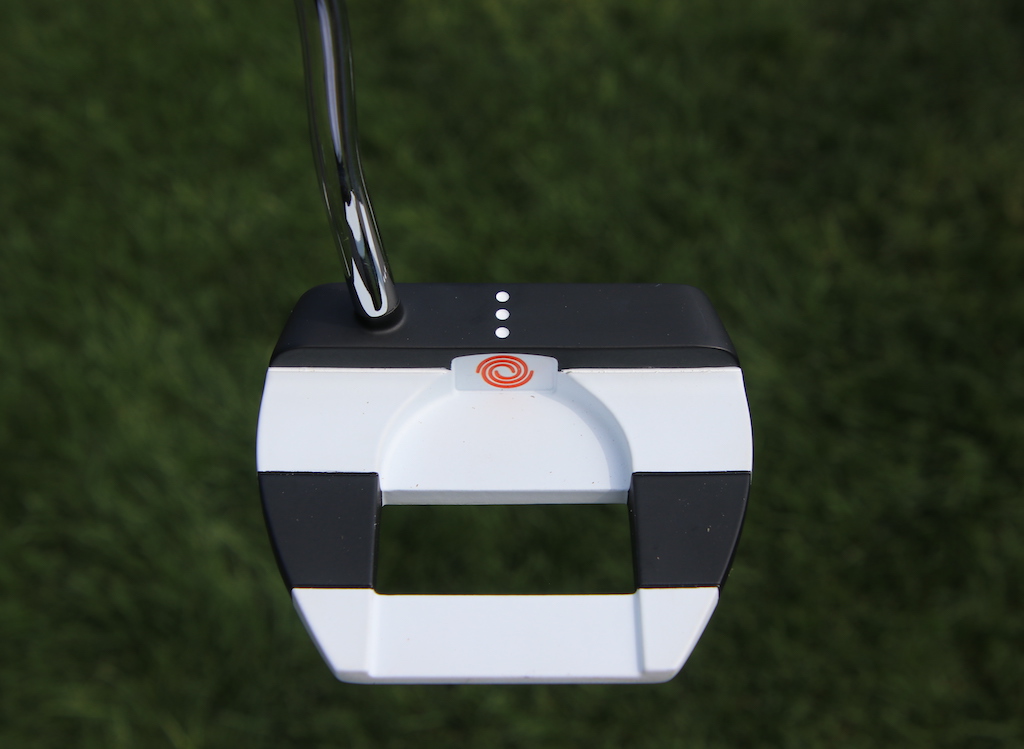
Fowler, who has had a couple weeks off since the 2024 RBC Heritage, started experimenting with a new, custom-orange Jailbird 380 head that’s equipped with a standard 35-inch putter build, rather than his previous 38-inch counter-balanced setup.
According to Fowler, while he still likes the look and forgiveness of his Jailbird putter head, he’s looking to re-incorporate more feel into his hands during the putting stroke.

He told GolfWRX.com on Tuesday at the Wells Fargo Championship that the 38-inch counterbalanced setup “served its purpose” by helping him to neutralize his hands during the stroke, but now it’s time to try the standard-length putter with a standard-size SuperStroke Pistol Tour grip to help with his feel and speed control.
Although Fowler was also spotted testing standard-length mallets from L.A.B. Golf and Axis1 on Tuesday, he confirmed that the custom Odyssey Jailbird 380 is the putter he’ll use this week at the 2024 Wells Fargo Championship.
Head over to PGATour.com for the full article.
- LIKE40
- LEGIT10
- WOW3
- LOL4
- IDHT1
- FLOP2
- OB0
- SHANK7
-

 19th Hole3 weeks ago
19th Hole3 weeks agoJustin Thomas on the equipment choice of Scottie Scheffler that he thinks is ‘weird’
-

 19th Hole3 weeks ago
19th Hole3 weeks ago‘Absolutely crazy’ – Major champ lays into Patrick Cantlay over his decision on final hole of RBC Heritage
-

 19th Hole2 weeks ago
19th Hole2 weeks agoLET pro gives detailed financial breakdown of first week on tour…and the net result may shock you
-

 19th Hole3 days ago
19th Hole3 days agoReport: LIV star turns down PGA Championship invite due to ‘personal commitments’
-

 19th Hole1 week ago
19th Hole1 week agoGary Player claims this is what ‘completely ruined’ Tiger Woods’ career
-

 Whats in the Bag2 weeks ago
Whats in the Bag2 weeks agoTeam McIlowry (Rory McIlroy, Shane Lowry) winning WITBs: 2024 Zurich Classic
-

 Equipment1 week ago
Equipment1 week agoGolf fans left surprised by LIV’s choice of course for its 2024 individual championship event
-

 Equipment2 days ago
Equipment2 days agoDetails on Justin Thomas’ driver switch at the Wells Fargo Championship



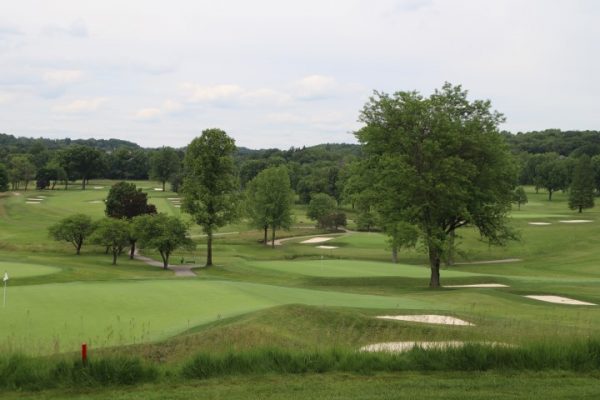






















Pingback: My 2021: What I enjoyed sharing most with you – GolfWRX
Steve Hjortness
Jul 28, 2021 at 5:47 pm
Great article. I love to read about the history of golf and the people involved with it.